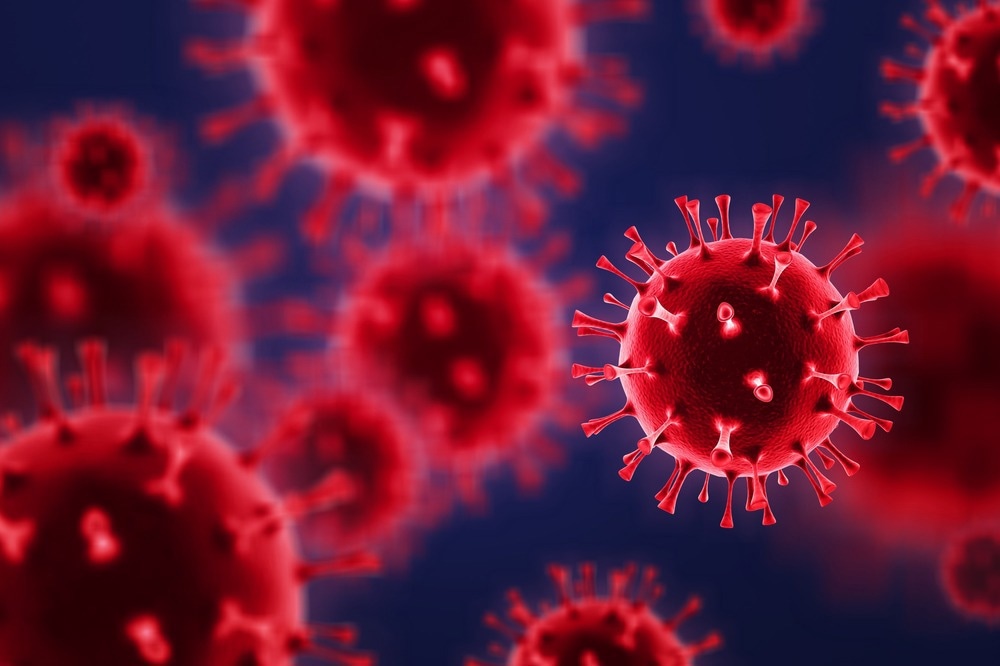In a recent study posted to the bioRxiv* server, researchers evaluated blood plasma proteins to identify new targets for coronavirus disease 2019 (COVID-19) treatment approaches and prevent complications associated with severe illness.

Background
There is an unmet need for effective therapies for severe and long-COVID-19 cases. It might partially be due to a lack of understanding of the molecular-level phenomena underlying the disparities in COVID-19 progression.
About the study
In the present study, researchers investigated the whole spectrum of COVID-19 severity, accounting for the impact of age and ethnicity, through proteomic profiling of blood plasma proteins collected at a biospecimen repository for COVID-19 in the University of Southern California (USC), United States.
The team completed the specimen collection between 1 May 2020 and 9 June 2021 and assigned anonymized, coded IDs to each study participant. They divided the study subjects into four cohorts, severe, moderate, mild, and control.
Severe subjects sought intensive care unit (ICU) admission for COVID-19 treatment, while moderate sought only hospital admission for COVID-19. Subjects with mild COVID-19 tested severe acute respiratory syndrome coronavirus 2 (SARS-CoV-2)-positive but did not require hospitalization, and controls tested negative for SARS-CoV-2 upon ICU admission and remained under treatment for other diseases.
The team analyzed plasma samples for protein expression by Olink proximity extension assays (PEA) that quantified 184 secreted biomarkers. They used two panels from Olink, Target 96 Inflammation and Target 96 Oncology II, to assess proteins related to immune response. Combined, these two panels comprised 184 proteins, of which 178 were unique.
The team excluded proteins, interleukin two receptor subunit beta (IL2RB), IL-1α, IL-2, beta-necrosis growth factor (β-NGF), IL-13, IL-33, and IL-4 as their Normalized Protein eXpression (NPX) value deviated +/- 0.3 from the average value across all samples. Seven proteins in over 50% of samples in all study cohorts had NPX values under the protein-specific limit of detection (LOD), leaving 171 unique proteins. Finally, the team analyzed 144 blood plasma samples.
Study findings
The researchers identified many proteins already implicated with severe COVID-19 by clinical and in vitro studies. More importantly, they identified multiple new markers correlated with the severity of response to SARS-CoV-2 infection. The most prominently enriched proteins were implicated with an inflammatory response to SARS-CoV-2 infection, including chemokine (C-C motif) ligand 3 (CCL3), chemokine ligand 9 (CXCL9), IL-6, IL-8, and CXCL10.
Drug Discovery eBook

Clinical trials assessing their effectiveness in preventing the progression to severe illness and COVID-19-related acute respiratory distress syndrome are ongoing. The cohort with severe subjects showed highly elevated levels of Syndecan 1 (SYND1) and extracellular newly identified receptors for advanced glycation end-products binding protein (EN-RAGE).
SYND1 is a heparan sulfate proteoglycan, a potential biomarker of COVID-19-related endothelium damage, resulting in a higher need for oxygen and mechanical ventilation. Further, it facilitates SARS-CoV-2 entry via angiotensin-converting enzyme 2 (ACE2) co-localization and its transmission to epithelial cells via binding to dendritic cells. Further, it actively changes the course of SARS-CoV-2 infection and could be a potential target for COVID-19 therapies.
EN-RAGE, a calcium-binding protein family member, is associated with several pro-inflammatory conditions in multiple organs. Its elevated levels indicate an increased inflammatory response to SARS-CoV-2, even in asymptomatic cases.
Studies have shown that EN-RAGE levels also increase in the blood plasma of patients with chronic obstructive pulmonary disease (COPD), a COVID-19-related condition associated with an elevated risk of ICU admission, hospitalization, and mortality. It uses a variety of inflammatory mechanisms implicated with COVID-19 severity, including T-cell-associated cytokines, the renin-angiotensin system, and dysregulation in macrophage numbers. Further research should define the precise role of EN-RAGE and SYND1 in increasing COVID-19 severity.
Furthermore, the researchers identified growth factors, cerebrospinal fluid (CSF), tumor growth factor-alpha (TGF-α), fibroblast growth factor 5 (FGF-5), ephrin type-A receptor 2 (EPHA2), and β-NGF significantly and specifically elevated in severe COVID-19. A rise in the levels of these proteins suggests the body's attempt to repair tissues damaged by SARS-CoV-2 infection.
Intriguingly, the researchers found the most significantly elevated levels of mesothelin (MSLN), a growth factor, in this study dataset. Studies have examined its role in malignant cancers, but its biological function under normal physiological conditions remains unclear. It would be interesting to uncover the mechanism(s) by which MSLN augments COVID-19 pathogenesis.
Conclusions
To summarize, the study highlighted the complexity of COVID-19 pathophysiology. A detailed assessment of a wide range of biophysiological responses to COVID-19 revealed several biomarkers associated with proinflammatory pathways, viral entry and membrane fusion processes, endothelial damage, and tissue repair. All these proteins, pathways, and processes could be potential targets for COVID-19 therapies and should be evaluated further.
*Important notice
bioRxiv publishes preliminary scientific reports that are not peer-reviewed and, therefore, should not be regarded as conclusive, guide clinical practice/health-related behavior, or treated as established information.
- Harriott, N. and Ryan, A. (2022) "Proteomic profiling identifies biomarkers of COVID-19 severity". bioRxiv. doi: 10.1101/2022.11.29.518411. https://www.biorxiv.org/content/10.1101/2022.11.29.518411v1
Posted in: Medical Science News | Medical Research News | Disease/Infection News
Tags: ACE2, Acute Respiratory Distress Syndrome, Angiotensin, Angiotensin-Converting Enzyme 2, Biomarker, Blood, Calcium, CCL3, Cell, Chemokine, Chronic, Chronic Obstructive Pulmonary Disease, Coronavirus, Coronavirus Disease COVID-19, covid-19, CXCL10, Cytokines, Enzyme, Fibroblast, Glycation, Growth Factor, Hospital, Immune Response, in vitro, Inflammation, Intensive Care, Interleukin, Ligand, Macrophage, Malignant, Membrane, Mortality, Necrosis, Oncology, Oxygen, Pathophysiology, Protein, Protein Expression, Proteoglycan, Receptor, Renin, Research, Respiratory, SARS, SARS-CoV-2, Severe Acute Respiratory, Severe Acute Respiratory Syndrome, Syndrome, T-Cell, Tumor

Written by
Neha Mathur
Neha is a digital marketing professional based in Gurugram, India. She has a Master’s degree from the University of Rajasthan with a specialization in Biotechnology in 2008. She has experience in pre-clinical research as part of her research project in The Department of Toxicology at the prestigious Central Drug Research Institute (CDRI), Lucknow, India. She also holds a certification in C++ programming.
Source: Read Full Article
